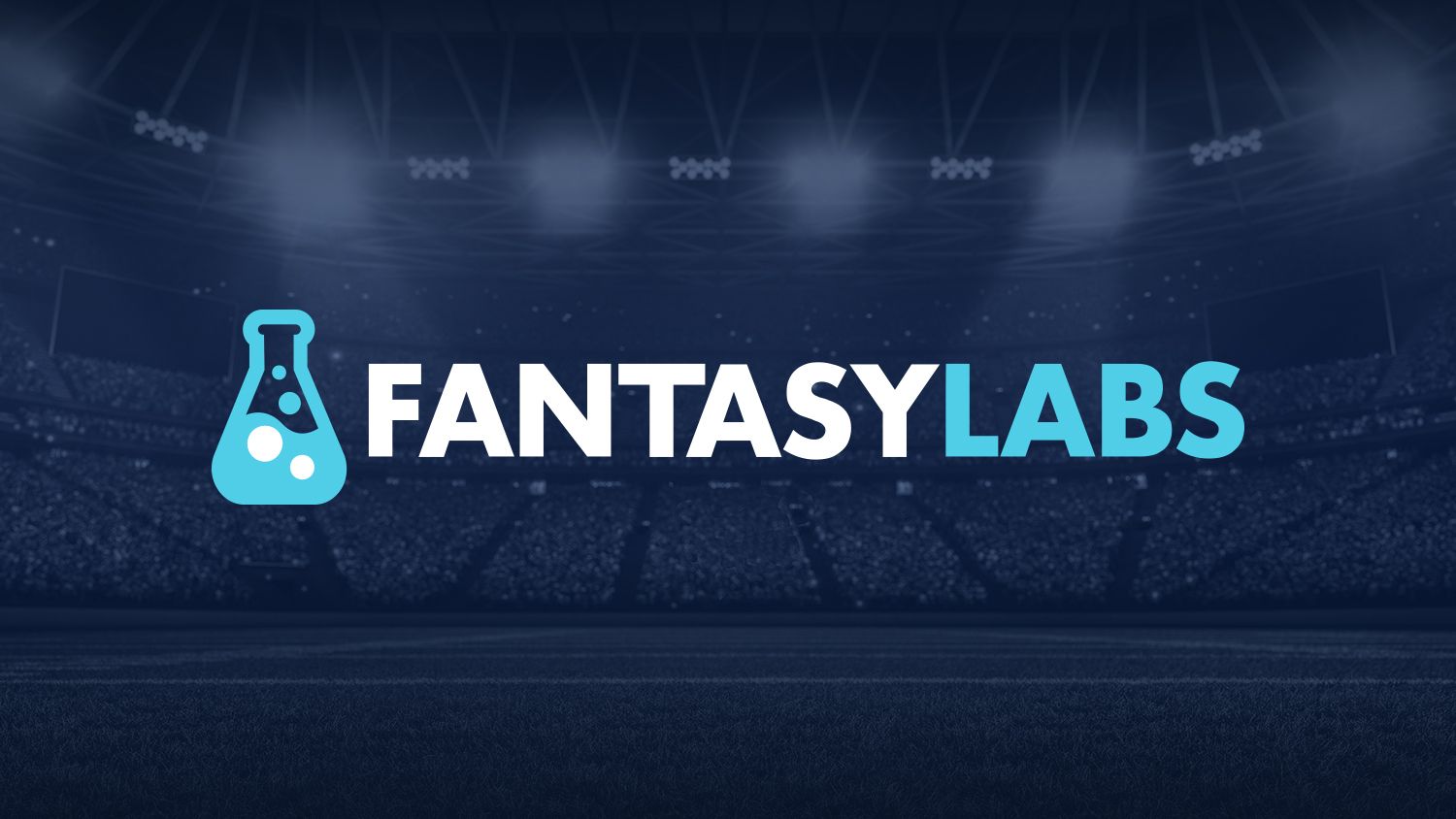As DFS players, we spend most of our time looking forward to the next slate, the next season, etc. Equally important, though, is looking back. Figuring out the thought process that leads to winning lineups is crucial. That’s what makes us better players long term.
After a tremendous run for single entry/small entry players, Week 6 went to user “ddry” who entered 103 rosters into the massive contest. That gives us a chance to check out their overall exposures as well as just the lineup that took first place, which could help reverse-engineer the overall strategy.
The Lineup

The Stack
One of the important points to consider in selecting stacks for GPPs is how concentrated the team’s offenses are. If a pair of players dominates the passing game, that makes the stack far more valuable than when the ball is spread out to more players.
That made Atlanta an intriguing stack coming into the week, as Drake London and Kyle Pitts combined for more than 55% of the Falcons’ air yards. Everyone involved — including QB Desmond Ridder — was extremely cheap, thanks to the poor overall offensive play from the Falcons. However, given the right game script, their passing attack could, and did, certainly exceed salary-based expectations.
Thinking about the “concentration” of an offense is also important when deciding between single and double stacks. When there are two clear options that dominate the workload, it’s easy to see them both hitting during the same week. Other teams have one clear alpha option, with targets fairly evenly distributed behind him.
A team that fits that bell is the Falcons’ Week 6 opponents, the Commanders. There was no Washington bring-back in this lineup from ddry, and generally speaking, it’s Terry McLaurin or nothing from the Washington passing attack. McLaurin has a 30% air yard share, and four other players are between 11% and 17% in Washington.
Overall, Ridder (and thus Falcons stacks) was the second most utilized build for ddry, trailing only Matthew Stafford and the Rams. London was their most used receiver, and it appears they alternated between Pitts/London and London/Bijan Robinson stacks.
Other Correlations
You could certainly paint a picture of the correlation between Kyren Williams and Cooper Kupp. The RB1 and WR1 from the same team have a correlation of 0.29 on average, which is mildly positive. It makes sense, as the team playing well on offense overall provides more chances for scoring from both players.
Or, a big game early from the top wideout leads to more carries late for the running back. That’s roughly what happened in Los Angeles, with the Rams taking the lead on a Cooper Kupp touchdown that they held on to through Kyren Williams. Given the number of lineups ddry entered, I highly doubt he hand-built them — meaning the Kupp/Williams pairing here was probably just a happy little accident.
Those two players were both ddry’s second-most owned at their respective positions (behind London and Raheem Mostert, who also feature in this lineup, meaning whatever optimizer they used was fairly likely to land on some lineups featuring both of them.
My takeaway from this is that it’s okay to have running backs and receivers from the same team in GPP lineups, even outside of stacks built around their game. It requires both the receiver and the back to dominate their team’s workload at the position, but that’s exactly what Kupp and Williams do, with a handful of other teams fitting that bill as well.
Be sure to check out all the pick’ems Sleeper has to offer with Sleeper Fantasy promo code LABS1 for a $100 deposit match.
The Chalk
Williams and Kupp were somewhat chalky here. However, I’m guessing that the percentage of lineups that paired them is extremely low relative to their individual ownership, so that’s one way to avoid eating the chalk.
Of course, Dolphins running back Raheem Mostert was massively popular. We rarely see players top 50% in massive contests like the Milly Maker, but Mostert did just that in Week 6. He was projected as a strong play following the injury to fellow Dolphins back De’Von Achane. However, once it was clear Jeff Wilson Jr. wasn’t returning in Week 6, Mostert became a near lock.
He’s an incredibly efficient runner in the league’s most explosive offense, and Miami was taking on a Panthers defense that ranks 32nd in DVOA against the run on the season. You can’t ask for much more than that, and Mostert delivered on his projections and then some.
It won’t always be that easy, but sometimes a player is massively owned because they’re too good of a play to pass up.
The Sleepers
I love that this lineup went contrarian at defense, rostering a Vikings unit that came in under 4%. They were taking on the Bears’ awful offensive line in what I had as the top defensive matchup on the slate. Their $3,000 price tag kept much of the field away. The Lions and Bucs, at $2,700 and $2,300 respectively, were far more popular, but they scored 10 and four points.
The bigger lesson is that defense is extremely hard to predict. ddry took advantage of that, rostering 16 of the 22 available defenses. Five of those with at least 7.8% exposure in their portfolio.
ddry also went well off the board with a pair of receivers. Amon-Ra St. Brown returned for the Lions in Week 6. Detroit faced a pass-funnel Bucs offense and was down running back Jahmyr Gibbs. Then, David Montgomery left with an injury, forcing the Lions offense to run through St. Brown. Without the Montgomery injury, it’s probably not as strong of a day for St. Brown, but still a good pick.
Most impressively, ddry landed on Saints receiver Rashid Shaheed. Shaheed came into the game with just a 13% target share for a below-average passing attack. Still, receiver production is very volatile, especially for deep-threat players like Shaheed. His 18.22-yard average depth of target (aDOT) leads all players with at least 20 targets.
That’s one of the benefits of mass multi-entry (MME) play. It’s unlikely that many users with a handful of lineups got to Shaheed, but those using optimizers had a shot. ddry used 39 total players at the position, giving them exposure to big games wherever they came from.
It’s a good reminder that receiver production is hard to predict, and mixing in some of the high-aDOT low target options across a few lineups is a good strategy.






